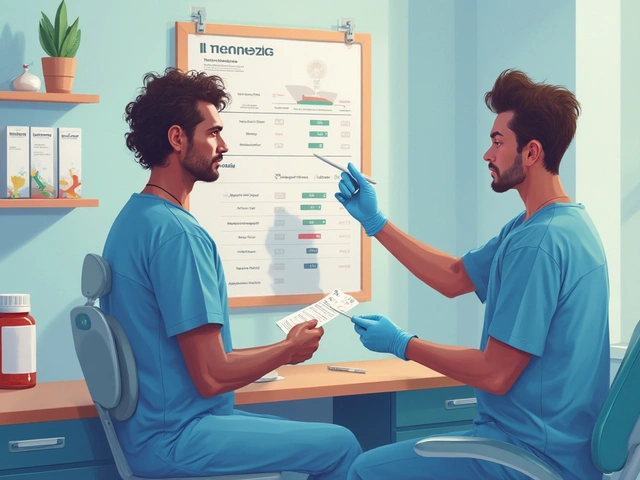Cerebral Palsy: Basics, Care, and How to Save on Medications in Mexico
Cerebral palsy (CP) is a group of lifelong movement and posture disorders caused by early brain injury. Symptoms range from mild clumsiness to severe spasticity, muscle weakness, coordination problems, and sometimes epilepsy or learning differences. Diagnosis usually happens in the first two years of life after delayed milestones or abnormal muscle tone show up.
Care focuses on treating symptoms, preventing complications, and improving daily function. Regular physical and occupational therapy builds strength, range of motion, and independence. Speech therapy helps communication and swallowing. Mobility aids like walkers, wheelchairs, and ankle-foot orthoses often make a big difference in daily life.
Medical treatments & common medications
Spasticity and pain are common targets. Oral medicines include baclofen and tizanidine to reduce muscle tone; side effects can include drowsiness and low blood pressure. Botulinum toxin injections work well for focal spasticity and are usually repeated every few months. For severe, generalized spasticity, an intrathecal baclofen pump may be an option.
Seizures affect some people with CP; common anticonvulsants are levetiracetam, lamotrigine, and valproate. Gastrointestinal issues and constipation are frequent — fiber, stool softeners, or laxatives are often needed. Bone health matters too: vitamin D and calcium can help prevent fractures when recommended by a doctor.
If you’re buying drugs or supplements in Mexico, compare generic options and ask pharmacists about equivalents. Use licensed pharmacies, check credentials, and keep original prescriptions. Our site can help you compare prices so you find safer, cheaper options. Be careful with online sellers: prefer known pharmacy chains, read reviews, and confirm packaging and expiry dates.
Daily care, therapies, and practical tips
Set a routine: daily stretching, standing time if possible, and consistent therapy appointments help more than sporadic effort. Adaptive equipment like bathtub seats, grab bars, and feeding aids reduce caregiver strain and boost safety. Look into early-intervention programs and school supports — they often change long-term outcomes.
Nutrition is practical: many people with CP have feeding difficulties or reflux. Work with a dietitian to manage calories, avoid choking risks, and support growth. Supplements such as omega-3 or multivitamins may help, but always check with the treating team first.
Practical travel and cost tips: bring letters from your doctor for controlled meds, pack enough supplies, and check customs rules when crossing borders. Compare prices across Mexican pharmacies, ask for generics, and buy larger quantities if safe and legal — savings add up. Join local support groups or online communities for real-world tips from caregivers living with CP.
Orthopedic surgeries — tendon lengthening, osteotomies, soft-tissue releases — can correct deformities and improve walking. Discuss goals and recovery time with your surgeon. Intrathecal baclofen pumps require refills and infection monitoring; plan around travel. Home changes like ramps, widened doorways, and shower chairs cut daily effort. In Mexico, public and private clinics offer a range of therapies; public hospitals can be cheaper but may have wait times. Ask for itemized price estimates before treatment. Get prescriptions in writing, and keep a shared medical file with therapy notes, surgical reports, and medication lists so any new provider can catch up.




